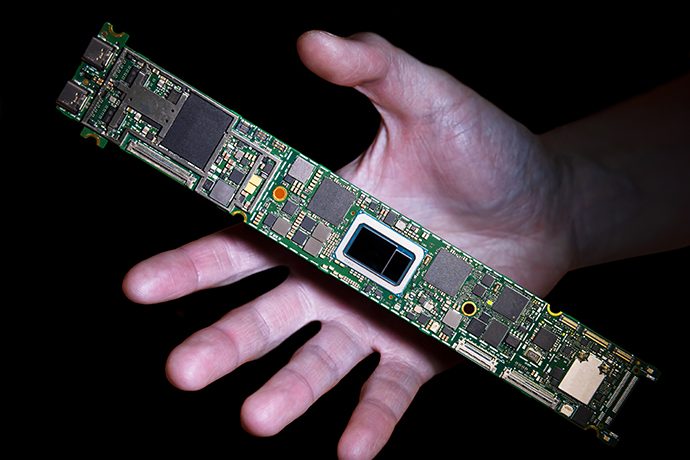
Intel hinted at CES 2020 that the fourth iteration to the Thunderbolt I/O specification is on its way, promising double the throughput of the current Thunderbolt 3 implementation.
Executive Vice President Gregory Bryant said during Intel’s annual CES presentation that the official successor to Thunderbolt 3 will have four times the throughput of USB 3.
AppleInsider has more:
As the base USB 3.0 has a maximum theoretical speed of 5Gb/s, this seems to be an unlikely claim to make as Thunderbolt 2 is capable of achieving 20Gb/s while Thunderbolt 3 is double at 40Gbps.
It is probable Intel is referring to the more recent update of USB 3.2 Gen 2×2, which is capable of up to 20 gigabits per second when using two lanes. If so, this would put Thunderbolt 4 as reaching a throughput of up to 80 Gb/s.
The 80 gigabits per second makes the most sense. Thunderbolt 3 uses four PCI-E 3.0 channels to achieve those speeds. In theory, Thunderbolt 4 would use four PCI-E 4.0 channels to get that higher speed.
It’s unclear when Apple might adopt Thunderbolt 4.

The Cupertino tech giant has for years relied on USB-C and Thunderbolt as the main I/O mechanism for its Mac computers. Apple was also the first major company to have adopted and popularized the Thunderbolt standard, which it co-developed in partnership with Intel.
Intel has said that Thunderbolt 4 will make its debut in its upcoming mobile processors code-named “Tiger Lake”. These CPUs are paired with Intel’s new Xe integrated graphics architecture and will be manufactured on the company’s ten-nanometer process. The chips are expected to deliver major speed gains over the tenth-generation Intel Core processors.
First systems are expected to ship this year.
Meanwhile, the new USB 4 specification, finalized in late 2019 by the USB Implementers Forum, promises Thunderbolt 3-like features such as data throughput of up to 40Gb/s and power delivery of up to 100W. Most importantly, USB 4 will be backwards-compatible with the earlier USB standards and will support Thunderbolt 3 connections.